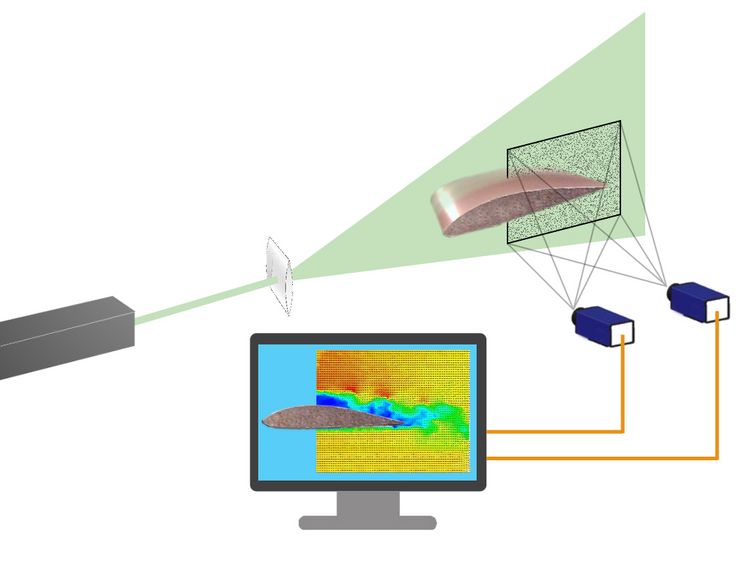Stereo PIV
Stereo PIV
A standard PIV (Particle Image Velocimetry) setup allows the determination of two velocity components within a two-dimensional section of a flow (2D-2C). In the process, particles (eg smoke) that move along the streamlines are introduced into the flow. Subsequently, a light section is produced with a laser and a sequence of images is taken with a camera from the illuminated area. If one compares the particles illuminated in the pictures with each other (cross-correlation), the speed field results.
If you extend this system by another camera, you can use the principle of stereoscopy (see human eye) to determine all three components of the velocity within the light section (2D-3C). This has the advantage that even turbulent and turbulent flows can be characterized, since in general also transverse velocities occur here. The schematic structure of a stereo PIV system is shown in the figure below.
In a current application of the stereo PIV system, the objective is to reproduce realistic wind turbine blade flows in the wind tunnel. In the outdoor use of a wind turbine (WEA) prevail on the one hand a turbulent flow, on the other occur characteristic vortex on the rotor blades, which are caused by impurities such as dirt or damage. The stereo PIV analysis allows to reconstruct these conditions in the wind tunnel as well as to understand the phenomena and their effects on the performance of a wind turbine.

Contact Person: Tom Wester


